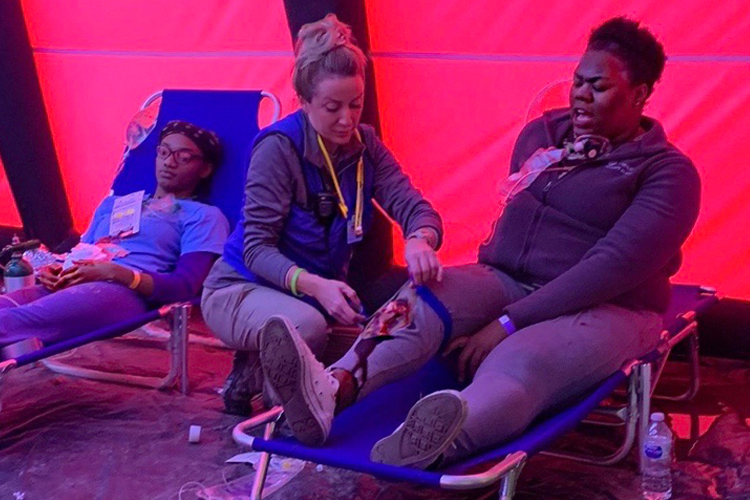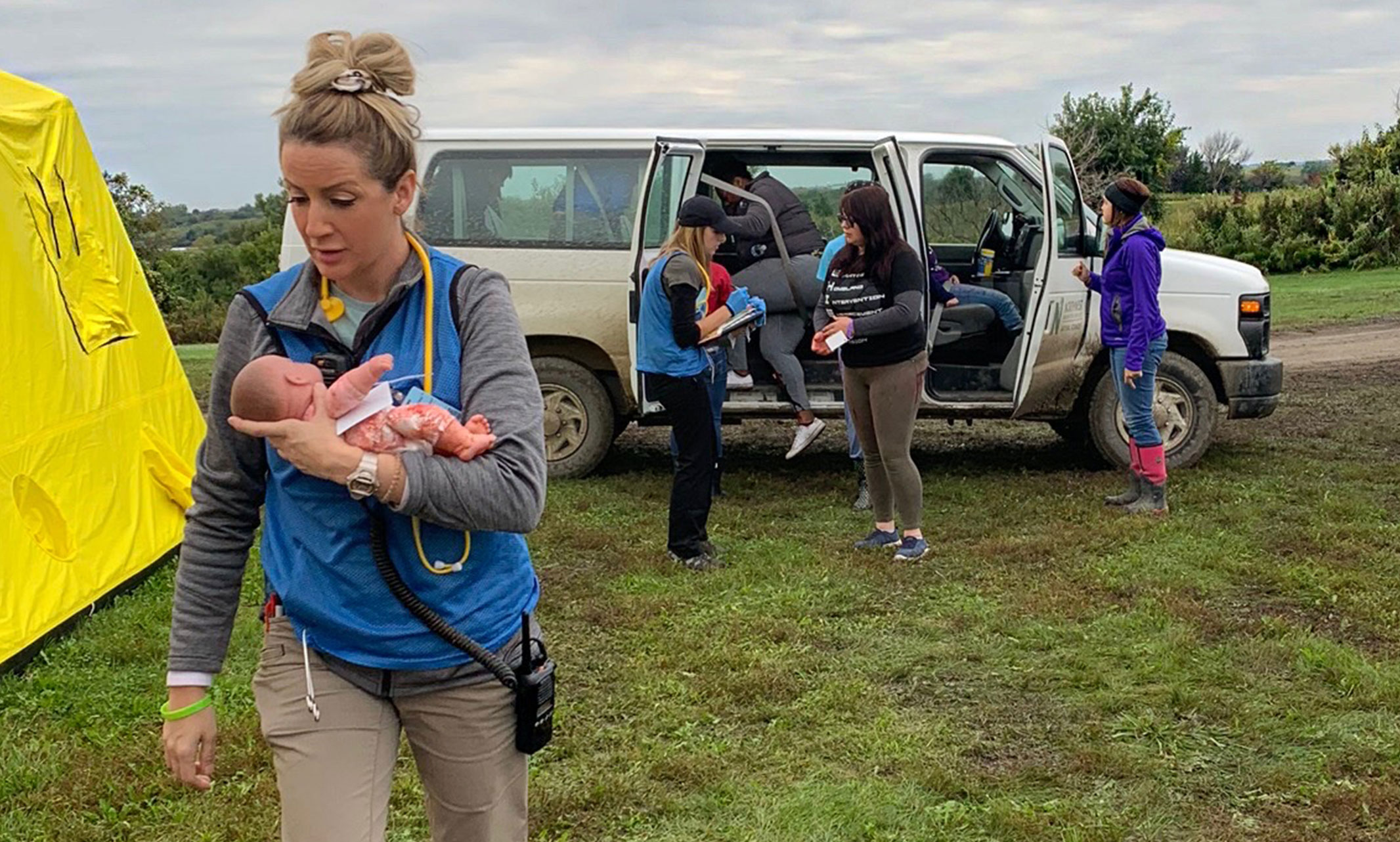For Julie Miller, treating 65 patients in three hours in a makeshift medical tent really brought home the importance of being prepared when faced with the unexpected. Miller, a UMKC nursing student, recently participated in Missouri Hope, a national emergency preparedness event held each year at Northwest Missouri State University in Maryville.
Presented by the Consortium for Humanitarian Service and Education, the $2.4 million immersion exercise prepares students and professionals to manage a community’s needs when disaster strikes. Complete with patient actors, students are challenged with emergency scenarios including a water rescue and several mass casualty situations. They also participate in a high-ropes course, designed to help train for patient transports when steps or elevators are unavailable due to building damage or power outages.
Sharon White-Lewis, an assistant professor at UMKC, led a group of 16 students during Missouri Hope, which spans four days and three nights. UMKC was one of two nursing schools in the country providing student participants, who were joined by members of the military, homeland security, fire fighters and police.
“The Missouri Hope exercises are the only immersive exercises that train students to prepare for our worst days,” said White-Lewis. “Nurses deployed to these disasters are thrust into circumstances facing devastating destruction, dangerous situations and ethical dilemmas, all while trying to help survivors with severely limited resources and personnel. As the world keeps facing both man-made and natural disasters, our UMKC graduates will be prepared.”

According to Miller, at the time the opportunity was presented, there has been a deluge of natural disasters in the news. “A string of tornadoes and hurricanes had just happened, and I would sit and think, I wished there was something I could do that would be helpful.”
Missouri Hope was the answer.
The UMKC Nursing and Health Studies Alumni Board also saw the importance of this experience and offered its support. Because disaster simulations require supplies students normally wouldn’t have – such as disposable stethoscopes, duct tape and mylar blankets – the board stepped in and provided funding to acquire these items for the students.
By design, participants aren’t given a great deal of prep or lead up before the exercise, said White-Lewis, as organizers want to stay as close to the reality as possible. But she does provide students training in a few care techniques that are unique to emergency situations: makeshift gurneys and wound coverage, improvised splints and emergency triaging.
Miller said triage is particularly hard on health-care providers as it goes against everything they’re taught. For example, in a hospital, nurses work to make sure patients have all the care needed to get back in good health. But in an emergency, it’s a judgment call on how much time to spend on each patient.
“When you’re out at a disaster and there are 50 victims in a field, you have to figure out how you can do the most good for the most amount of people,” said Miller. “On the spot, you have to perform a rapid assessment and decide if you can help that person or not and sometimes, you have to make hard decisions.”
“With 3 million nurses in the United States alone, the more nurses that know what to do in a disaster, the more we maximize our ability to save lives. It’s as simple as that.”
Miller says the exercise felt like a real disaster from the moment it began. She compared it to her experience in the UMKC patient simulation lab, where students interact with high-tech mannequins. While that offers valuable learning, it can feel artificial and require a bit of acting, she says. But at Missouri Hope, there was no feeling of having to act, as she treated every patient with the immediacy of an actual disaster.
The Consortium for Humanitarian Service and Education sponsors two other Hope initiatives – one in New York and one in Florida. All three provide unique disaster scenarios that would apply to that particular geographic area. Last year, UMKC students and faculty took part in both Florida Hope and New York Hope, and the school plans to continue that effort.
Sally Ellis Fletcher, associate dean of students at the school is a strong advocate for disaster preparedness opportunities for students. She believes these experiences will have lasting effects. “Disasters aren’t planned; they can happen anywhere or at any time,” she said. “With 3 million nurses in the United States alone, the more nurses that know what to do in a disaster, the more we maximize our ability to save lives. It’s as simple as that.”

